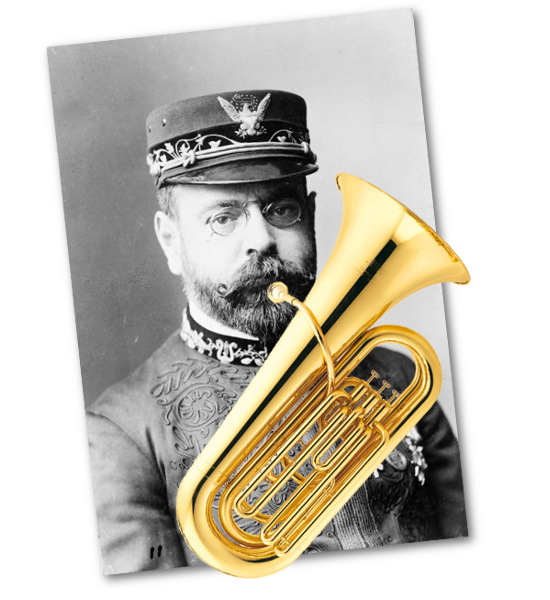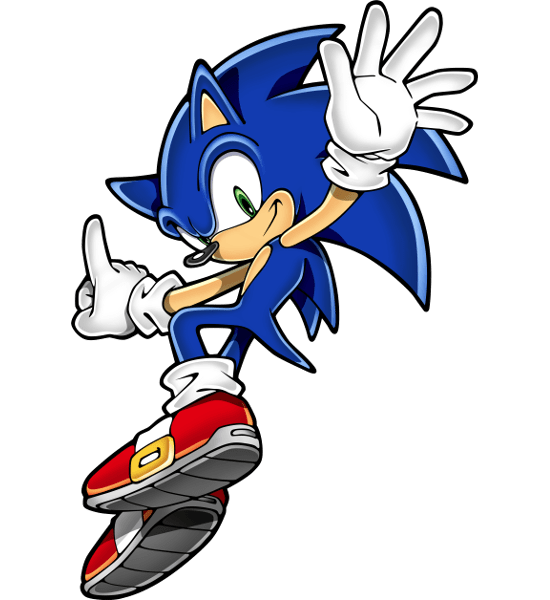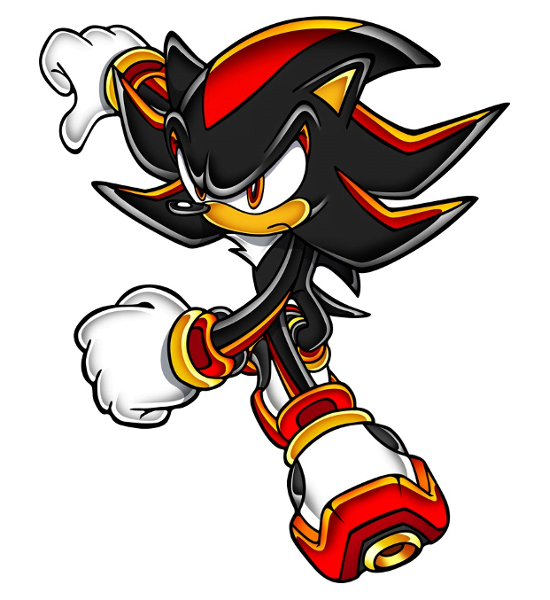Story Pile: Shadow The Hedgehog is Queerness
In music theory there’s this understood idea that brasses sound heroic and powerful, and strings sound gentle and feminine, a theory reinforced by years of musicology in theatre. What happened is when movies were new, and attaching music to characters in a particular way moved out of the Musical and into just telling stories, a sort of language of music got started.
We already had it that brass music sounded powerful and forceful and heroic – something that John Phillip Sousa sort of ran into the ground as a theme. By comparison, strings sounded delicate and Not Like Brass, so the formed an obvious counterpart for the fragile and the frail. Then over several thousand movies and repeated use of these two ideas in movies where boys were strong and girls were objects, we wound up where we are now, where despite never actually being true, horns ‘sound masculine’ and strings ‘sound feminine.’

I mean, think about this: What’s the Superman theme sound like?
Anyway, this means that when we reach back into earlier, pre-movie theatrics, though, we still now see that same coding. The association with the music extends beyond the media it’s in. Now, marches that predate movies are seen as ‘masculine’ because the movie comes with them. This is the power of the archetype, where when you’re seen as relating to a thing, it doesn’t really matter what you are doing, because it’ll all be seen in relationship to the archetype.
What does this have to do with Sonic The Hedgehog?
Shut up I’m getting there.
The point is, movies wound up this way because they were being slowly but steadily built for bigger and bigger markets. The more people you want to get involved, the more you lean on those archetypes, on a frame of reference. Brassy heroic music is, archetypally, masculine, and so, when you want to signal a masculine dude, you use brassy heroic music. This means that lots of this media is full of signals that are more about telling you A Thing Is A Way It Is Because It Is The Way It Is. An archetype is, basically, lots of reinforcing, circular story stuff. It doesn’t have meaning of itself – it’s just a way of signalling a thing should be sort of like these other things.
And now we get to Sonic The Hedgehog, the media franchise. We’re not talking about the game character – Sonic doesn’t really belong to games any more. When you’re talking about cultural impact, Sonic’s been in twenty five years of comics, three manga series, six books, and five television series, with a live-action CGI movie in the works being financed by a man who’s also repsonsible for the XXX and Fast and the Furious franchise. Sonic is a transmedia property, and matters more as being Sonic than he matters as a game entity. And despite all of this, this enormous spread of media representation, when you go looking for an answer to the question who is Sonic the Hedgehog you don’t find anything, really.
You get an archetype.
But that archetype gives us structure – and that gives us a place to look at the Sonic the Hedgeverse.

What then, is Sonic? What archetypally remains around this character? Well, he’s a Cool Hero. He’s edgy, in a very generic, mid-90s kind of way, in that he thumbs his nose at authority, he likes speed and going fast and doens’t like rules, man, but at the same time you know he’ll never blow off something that matters because that plays against being a hero, so what you’re left with is this character who is simultaneously unreliable but also very reliable. This is reflected in Sonic’s writeup on Wikipedia, composed of multiple sources, saying that Sonic is
…”like the wind”: a drifter who lives as he wants, and makes life a series of events and adventures. Sonic hates oppression and staunchly defends freedom. Although he is mostly quick-witted and easygoing, he has a short temper and is often impatient with slower things. Sonic is a habitual daredevil hedgehog who is honest, loyal to friends, keeps his promises, and dislikes tears. In times of crisis, he focuses intensely on the challenge as if his personality had undergone an astonishing change.
If you sit down and cross out those sentences that mean nothing like ‘makes life a series of events,’ you’re left with a loose drifter without any fixed goal who is a staunch defender of freedom who always stands by his friends, easygoing until he doesn’t have to be, patient unless he’s not and is like the wind except he also always keeps his promises. In essence, there’s nothing there, but despite that you can still say you know something of who Sonic is. It’s even there in his visual coding – red, white and blue. Sonic is a Bold Hero Guy.
Once he’s the Bold Hero guy, everything else kinda falls around him. Tails becomes the Sidekick Boy, who has to be smaller and worse at everything than Protagonist Guy by default, so he can be rescued but also so he has some reason to aspire to being like Protagonist Guy. He can be sweet and kind (which aren’t edgy and cool), and he’s probably a tiny bit more femme than Protagonist Guy, in the vein of the nerdy friend. Tails fits this archetype pretty easily – he’s better than Sonic at machines, which builds in that ‘nerdy friend’ slot.
You can play this outwards; Knuckles is the voice of authority, with his stable position and opposition to Sonic because Sonic isn’t following the rules. There’s Amy Rose, the Good Girl who hangs around him and has an interest in him (which shows he’s desireable), but for some reason he never has to commit or dismiss this – Amy will want him regardless of what a doofus he is and she will usually be at fault for any discomfort he experiences. Rouge introduces a sexy other to Amy, again, a reflection of an image of Sonic, and then, finally… we get Shadow.

Note that up until now, none of the other major characters (Sorry, Big) introduced have been like Sonic. They’ve been explicitly unlike him – Shadow is the first opposite to Sonic (unless you count 1994’s Anti-Sonic The Hedgehog, which we don’t, and he didn’t come back as Scourge the hedgehog until 2011, well after Shadow’s appearance so don’t @ me). And when you’re dealing with archetypes, there is an identity that exists for the characters in movies and TV series like this. The place for a character who is the same type but not the same way. He is coded cool, but 00s edgy to 90s edgy, making him seem slicker, more fashionable, more aware, compared to Sonic’s suddenly oblivious-seeming 90s sort-of-surfer coolness. Shadow is angry, he is resentful, and that casts Sonic, for all of his quick temper, as almost a beach bum. What’s more, Sonic is surrounded by friends and is a celebrated hero – he’s the Protagonist Guy.
In a template where the Cool Guy is opposed by someone Equally Cool But More Distressed, we enter the cinematic tradition of The Other. He’s bad, but not that bad, he’s an opponent, but not a villain. That makes him a humanised Other, a character who stands to contrast with the hero (in a way that once, Knuckles did). The thing with The Other is, they take on a LOT of forms in different media, but if you’re queer, chances are your favourite character is a The Other. Camp LOVES them to bits.
In the greater narrative space of Sonic the Hedgehog, these characters are still mostly empty. They’re a description of a handful of traits in relationship to one another. In that space, Shadow the Hedgehog is a camp antagonist, an example of The Other, who can be – and sorta IS – All Queerness. What you see there is what you can pour into him.